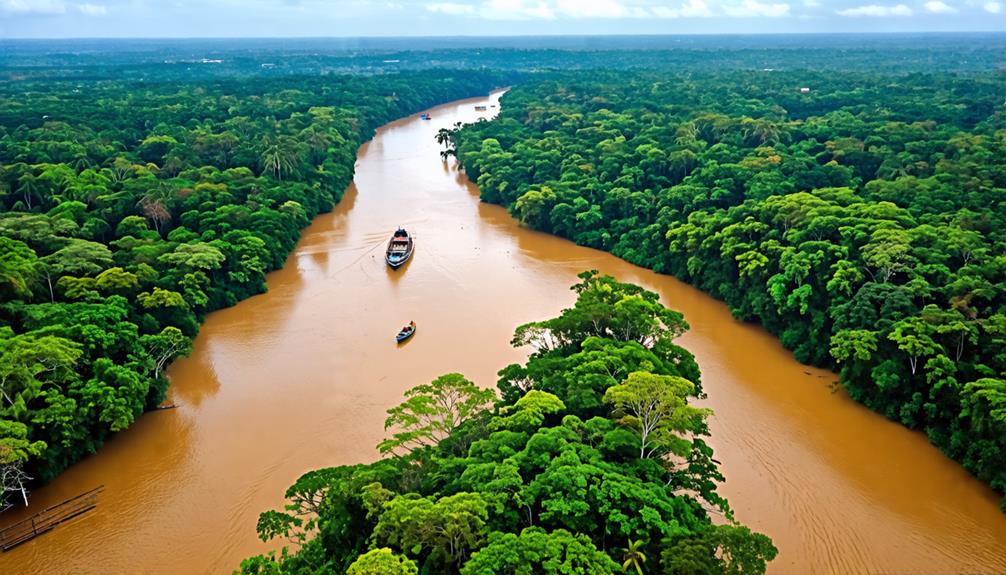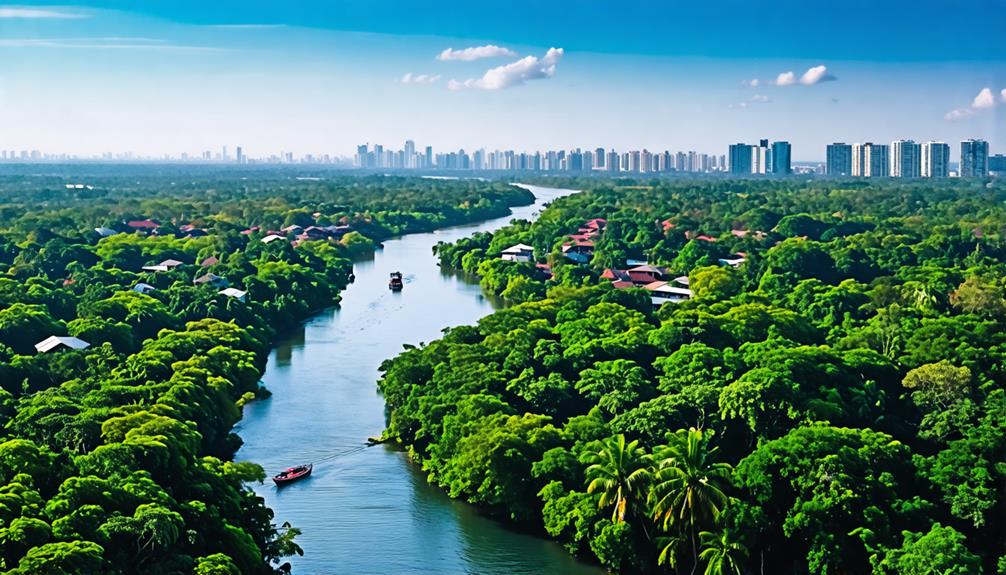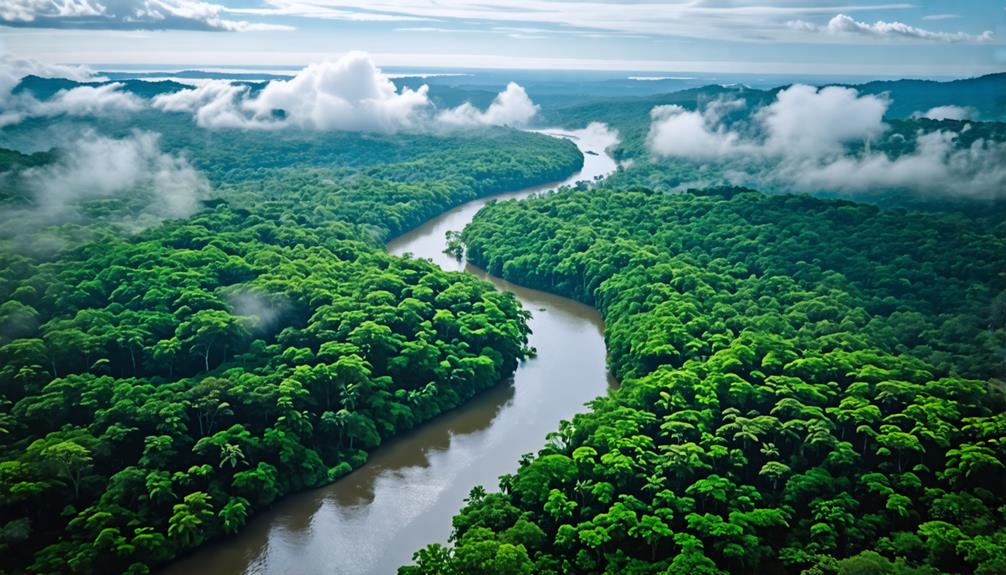You might've noticed that when you look at a map of South America, there's something peculiar about the Amazon River: it's completely devoid of bridges. This absence isn't a mere oversight or lack of effort. Instead, it's a reflection of the unique challenges posed by one of the world's most formidable natural wonders. The reasons behind this bridge-less expanse are as diverse and complex as the Amazon itself, spanning geographical, environmental, economic, and cultural factors. As you consider this seemingly simple fact, you'll find it opens up a fascinating exploration of human ingenuity, natural barriers, and the delicate balance between development and preservation.
Key Takeaways
- Seasonal flooding and width variations make bridge construction extremely challenging and expensive.
- Soft sediment and marshy banks complicate foundation stability for large bridge structures.
- Environmental regulations protect the Amazon's unique ecosystem, hindering large-scale construction projects.
- Limited economic demand due to sparse population and reliance on river transport reduces feasibility.
The Amazon's Unique Geography

The Amazon River's immense size and ever-changing nature present unique geographical challenges that you'll rarely encounter elsewhere in the world.
Spanning 4,345 miles, it creates a unique geographical barrier across South America. You'll find its width varies dramatically, from 2-6 miles in the dry season to a staggering 30 miles during seasonal flooding.
As the largest river basin globally, covering 2.7 million square miles, it divides the continent into distinct regions. This division limits overland travel and increases transportation reliance on waterways.
You'll face significant construction difficulties along the Amazon due to its soft sediment and marshy banks, which complicate stability for large structures.
These factors combined make the Amazon a formidable obstacle, shaping the geography and human interactions across vast stretches of South America.
Engineering and Environmental Challenges
Beyond the geographical complexities, you'll encounter formidable engineering and environmental hurdles when contemplating bridge construction across the Amazon River.
Seasonal fluctuations in water depth, ranging from 2-6 miles to 30 miles wide, complicate design plans. Soft soils and constant erosion challenge structural integrity, while extensive marshes necessitate long access viaducts and deep foundations. You'll also face obstacles from floating vegetation islands known as matupás.
Environmental concerns further compound these engineering challenges. Strict regulations aim to prevent habitat disruption and deforestation, requiring thorough impact assessments before any construction can proceed. You'll need to address potential ecological consequences and navigate complex approval processes.
Overcoming these obstacles demands innovative engineering solutions and a delicate balance between infrastructure development and environmental preservation. The unique combination of physical and ecological factors makes bridging the Amazon an exceptionally intimidating task.
Economic and Cultural Considerations

When you consider building bridges across the Amazon River, you'll find that economic and cultural factors play an essential role in shaping the feasibility and desirability of such projects. The region's sparse population and limited demand for bridges make river transport the primary means of moving goods and people. Economic priorities often favor other infrastructure investments, as bridge construction costs outweigh potential benefits.
| Economic Factors | Cultural Considerations |
|---|---|
| Limited demand | Indigenous communities |
| High costs | Local economies |
| Other priorities | River-based transport |
| Sparse population | Cultural connections |
Environmental concerns are significant, as bridge projects could lead to deforestation and disrupt local ecosystems. The Amazon's biodiversity and indigenous communities are at risk. Cultural connections along the river rely heavily on boats and ferries, which are deeply integrated into local economies and social structures. This further diminishes the necessity for bridge construction, reflecting ongoing debates about balancing economic growth with rainforest preservation.
Conclusion
You've discovered why the Amazon River remains unbridged. It's not just about engineering; it's a complex interplay of geography, environment, and culture.
You'll find that the river's vastness, seasonal changes, and fragile ecosystems pose significant challenges.
You've also learned that economic factors and traditional ways of life play essential roles.
As you consider the Amazon's future, you'll understand why bridges mightn't be the answer for this unique waterway.

Leave a Reply